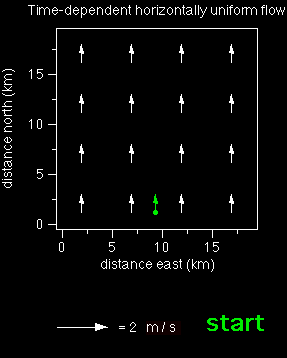
Leonard Euler and Joseph-Louis Lagrange independently developed mathematical methods to describe and analyze the movement of fluids. The two methods represent different approaches. Both give a complete description of the situation. None is superior to the other; the two methods are complementary in their use.
The Eulerian approach describes the flow through the change of velocity (speed and direction) at fixed locations. The Lagrangian approach describes it by giving the location of a fluid particle as a function of time. The animation below demonstrates the two approaches: The white arrows show the velocity at fixed locations, the green curve shows the successive locations of a moving particle.
Mathematically the two methods require very different techniques and are difficult to combine. Euler's method is ideal for the analysis of observations taken at fixed locations, Lagrange's method is ideal for the analysis of measurements made with drifters and floats.

Animation: © M. Tomczak, Creative Commons license